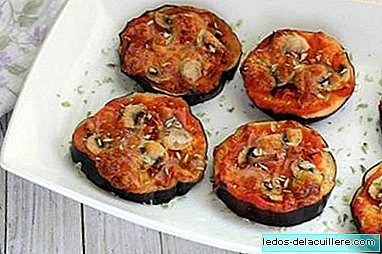
A few decades ago, kiwi was an exotic fruit in Spain and much of the world, but today it is common in many countries and luckily we have it very close. But, Why does the kiwi have to be on our table? What properties does this food also known as "health fruit" have?
Originally from China, where it grew wild, the kiwi began to spread in the 20th century through New Zealand, the United States and in Europe in the 60-70s, when it also arrived in Spain.
There are two main varieties, green kiwi and yellow, golden or "gold" kiwi (this native of New Zealand), although it is the first most widespread because of its importance in cultivation and its most affordable price. Actually, its nutritional composition and its benefits are very similar, we could say that the biggest difference is the color and the sweetest taste of yellow kiwi.
Kiwi Properties
Kiwi has a high dietary value, potentiates the body's defenses, is an antioxidant and anti-inflammatory and may have properties to prevent certain seasonal diseases.
This fruit has a high content of ascorbic acid (antioxidant), potassium, phosphorus, magnesium and other minerals that contribute to a normal blood pressure ... It is very rich in vitamin C (Contains more than citrus), which protects cells from oxidation and helps defenses by stimulating the activity of the immune system (yellow kiwi is richer in this vitamin).
The kiwi also contains a lot of vitamin E (protects the skin, helps fight infections ...) and is also very rich in fiber, so it is ideal for good intestinal transit and prevent constipation problems. This fruit is also a natural source of folic acid, important during pregnancy (even before pregnancy), lactation and childhood.
Its high content of natural digestive enzymes facilitates digestion, helping to digest proteins. It is low in cholesterol and its caloric intake is reduced.
Ideas to eat kiwi
Kiwis can be peeled and eaten directly in small pieces, cut in half and eaten with a teaspoon or prepare them in different ways that make them more attractive to children. They can eat even babies when complementary feeding begins, provided they have been present in the mother's diet.
Here we leave some ideas that give a special touch to kiwi, even some sweets and "whims" for occasions:
- Fruit Macedonia, combined with orange, pineapple, grapes, apple ...
- Fruit skewers
- Salad with kiwi, giving a tropical touch to the vegetables
- Sweets with kiwi: buñelos, pies, biscuits ...
- Kiwi Mousse
- Kiwi gazpacho
- Slushies, fillings, ice cream, jams ...
- Kiwi and apple smoothie
- Peach, apple and kiwi smoothie
- Kiwis stuffed with mascarpone and crispy apple
So if we want to strengthen the immune system of the whole family and enjoy a healthy and delicious dessert we must not forget to have kiwis in the fruit bowl. Currently we find them throughout the year and in different varieties, so there is no excuse to be part of our five recommended servings of fruit and vegetables a day.












